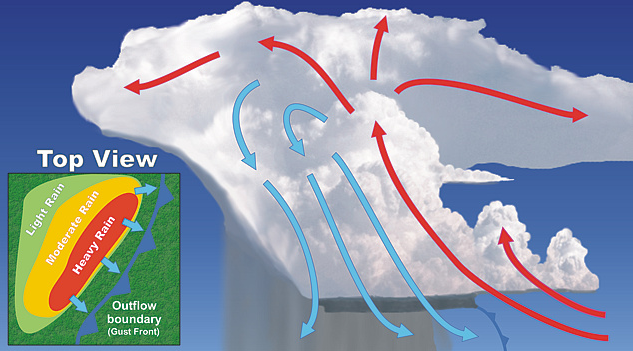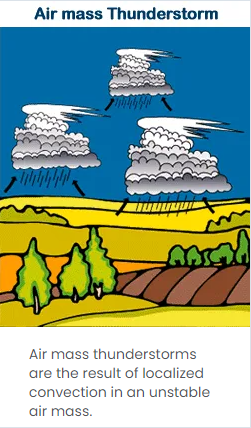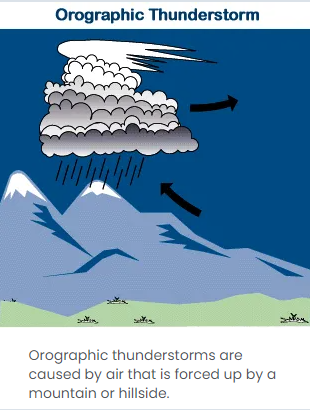Thunderstorms: What are they and how do they form

Just about every thunderstorm has a similar origin story. It all comes down to air density - hot air rises and cold air sinks. For various reasons, a parcel of air near the surface may become warmer than its surroundings. This causes the warm air to rise, creating what meteorologists call an updraft. The parcel will rise until water begins to condense out of the air and form clouds. This condensation cools the parcel of air, causing it to sink in what we call a downdraft. This circulation of hot and cold air is called convection. Towering and puffy clouds are often a good sign of convective activity.

While the end result is the same, the means by which a parcel rises/becomes warmer than its surroundings can vary. There are three main ways this can happen, two involve ‘lifting’ a parcel of air and one involves localized heating. Let’s start with localized heating. When conditions are right, the atmosphere near the surface can become unstable. When this happens, surface heating can allow for localized thunderstorms to form. The image below shows this process.

Now let’s focus on the two lifting processes: orographic and frontal. An orographic thunderstorm is a thunderstorm which forms as a result of an air parcel being forced up the side of a mountain. When a parcel is forced up in elevation, it can easily become warmer than the surrounding air allowing for an updraft to form. The figure below illustrates this well.

Lastly, there’s a frontal thunderstorm. Cool, dry air, like that found in a cold front, is more dense than warm air. Thus, when a cold front moves into a given area, the cool and dry air mass will slide under the already present warm, moist air, forcing it upward. This lifted warm, moist air mass can easily cause thunderstorms to flare up. This is why there is often stormy weather ahead of a cold front.

Have you downloaded the 'KESQ First Alert' app yet? It's FREE! Click here

You'll stay up-to-date with the latest weather videos. In addition, be able to monitor the changing conditions from wherever you are!




